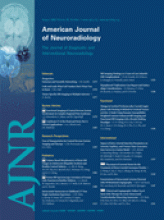In a plenary session at the last meeting of the Council of Science Editors, Mr. Blake Godkin made the following comment: “In a time of accelerating change—when the future of any nation will be based on how well it creates and manages new ideas—we can no longer make current decisions primarily on the basis of experience. This is why it is imperative to become comfortable with the process of thinking like a futurist.”1 Mr. Godkin, I might add, works for the SHW Group, a Texas-based firm of architects that designed the Dubai extension of the University of Michigan and parts of the Texas Tech University campus; they specialize in designing education-related buildings. Architecture has historically been involved with futurism, as has literature. The prediction of the future also plays a critical role in medicine and in scientific publishing.
The term futurism broadly means to speculate about the future. Initially referring to a religious movement, futurism became popular in the early 20th century, and the term was appropriated by architects, painters, and other people associated with the avant-garde movement. In literature, the futurism movement started in Italy. From people, futurism extended to other areas and was later adopted by consulting companies such as the RAND Corporation and others that mainly deal with prediction of military conflicts and their consequences. Today's futurism (or more correctly, neofuturism) is represented by groups of people who study and attempt to predict global trends mostly as they relate to businesses and man-made or natural disasters. The formal study of the future includes foresight, strategy, and prospective awareness. Successful futurologists use trend, precursor, and scenario analyses in their prospecting.
In my opinion, scientific journal editors have to be imaginative and be driven futurologists. Systematic collections of data indicating a trend are commonly used in medicine to predict the future of 1 or more events. Unfortunately, predicting long-term trends is fraught with considerable problems. Precursor analysis takes into account that phenomena go through changes and, thus, we should be able to anticipate them. Creating diverse scenarios enables us to anticipate phenomena. The World Future Society2 emphasizes all of these mechanisms and believes that continued improvement in how they are used will lead to better understanding and planning for the future. Of course, to achieve these goals, creativity is also of the essence.
In the previously mentioned lecture, Mr. Godkin also told the audience what he considers to be the tools of the futurist: brainstorming, trend analysis, and trend scanning (these are also the sequential stages needed to make assumptions regarding the future). As futurologists, at the brainstorming stage we need to accept all ideas, no matter how wild they may initially seem. Unrelated thoughts may give origin to new and valuable ones. The term brainstorming was probably coined by Alex Osborn, a mid-20th century advertising executive who characterized it as encompassing the following: no criticism of ideas, large quantity of ideas, building on of other ideas, and encouragement of wild and exaggerated ideas.3 Mr. Osborn said, “It is far easier to tame a wild idea than to invigorate a dull one.” Many of the options available on AJNR's Website are the fruition of successful brainstorming. Prospective trend analysis spots a pattern and takes advantage of it. Trend scanning is currently easier than in the past because of the use of search engines. By analyzing key terms entered into search engines, we can understand what our readers and Website users want. Starting our blog site (www.ajnrblog.org) and the Case of the Week are examples of the results of trend scanning and adapting to what the public needs and wants.
What are the advantages of having a blogsite? Most internet users are young (between 18 and 44 years old), and trend research indicates that e-mail is used much more by older vs younger people.4 E-mail is the most popular internet activity among older persons, and nearly 75% of persons 64 years or older use it regularly. In the last 4 years, the usage of e-mail among younger people has decreased by more than 15%. Persons aged 18 to 32 years (Generation Y) use telephone texts, blogs, and other social networking activities as their main forms of communication and not e-mail. As younger generations become incorporated into the American Society of Neuroradiology and AJNR readership, blogging will become an important activity; it is not surprising that older generations rapidly learn how to blog and also enjoy it.
A blogsite is not exactly the same as an internet forum or message board, though, to me, the differences are minimal. An internet forum and a message board are discussion sites perhaps analogous to the bulletin board of yore. A blogsite's contents are more structured than those of forums and boards. These networking sites may create a paradox that is important in science and is called participatory journalism. It implies that news is no longer provided by a group of trained journalists and writers but by the public in general. The risk for this trend in science is that unsupported ideas and concepts become slowly incorporated and, with the passing of time, are assumed to be truths. Anonymous networking sites encourage this type of behavior, which is why our blogsite requires all contributors to clearly identify themselves. Although most blogsites serve as places of social networking, ours should serve as a place of scientific networking.
Being highly specialized, as we neuroradiologists are, limits one's exposure to assessing the future as a whole. Thus, we must seek what parts of futurology we need to practice. For ourselves on the editorial board and for our readers, we must be imaginative, agenda-driven, consensus-driven, critical, alternative, predictive, and validating futurists. Epistemologists tell us that knowledge lies at the crossroads of truths and beliefs. The future of knowledge will, in part, depend on constant interactions such as the ones possible on our blogsite.
- American Society of Neuroradiology












